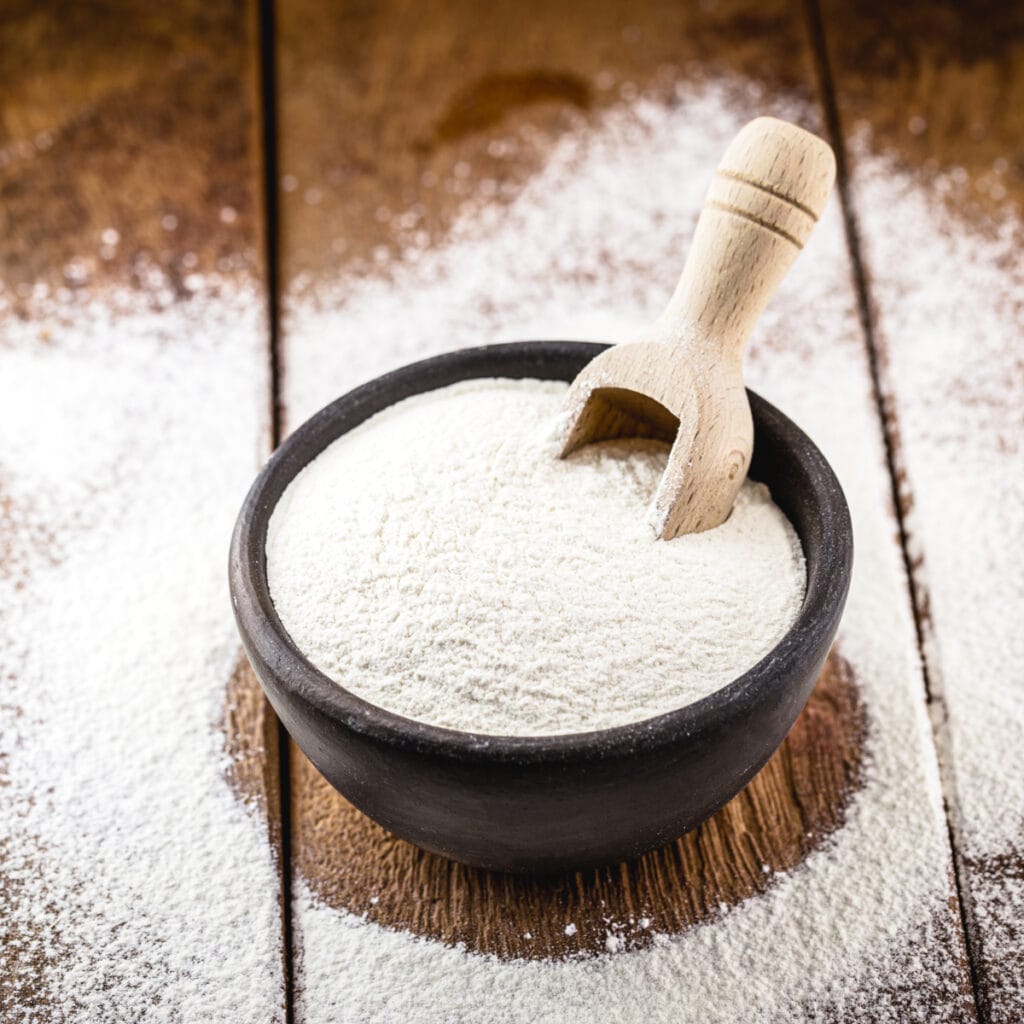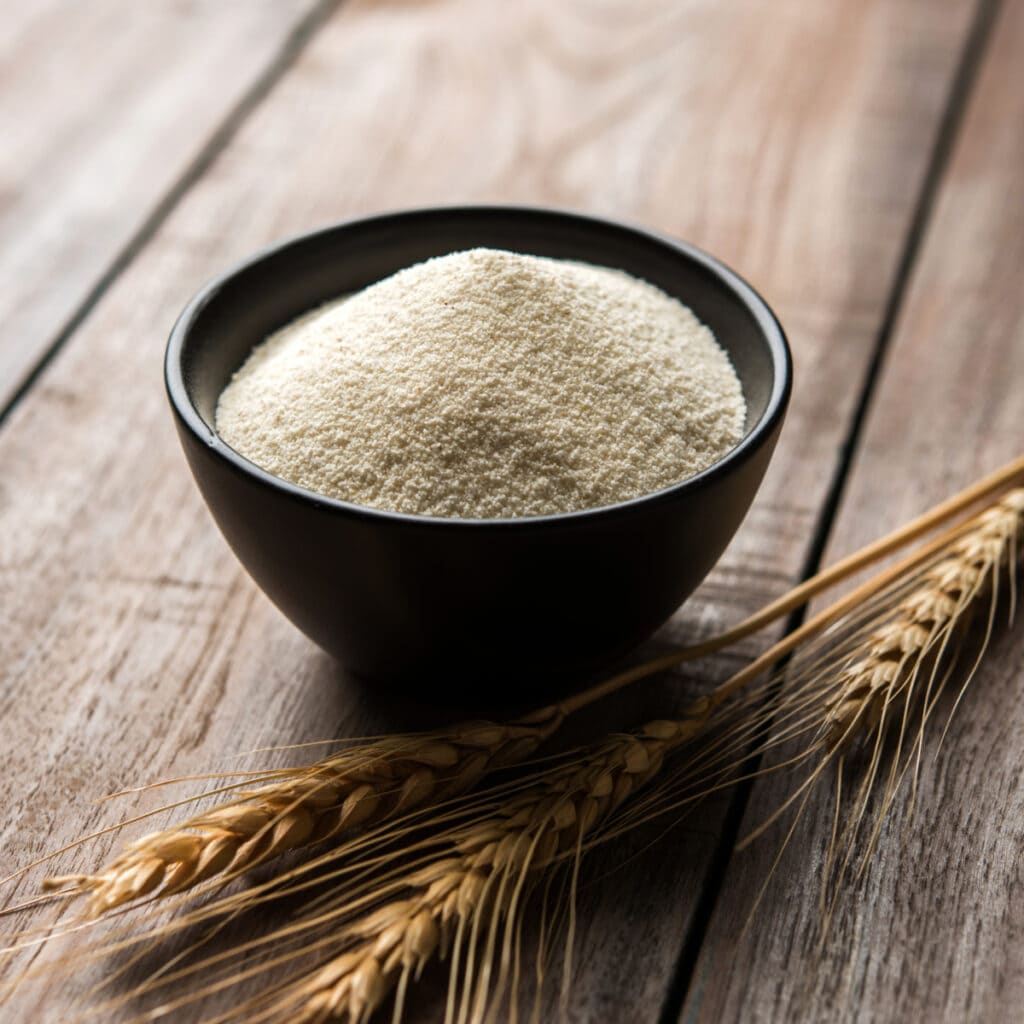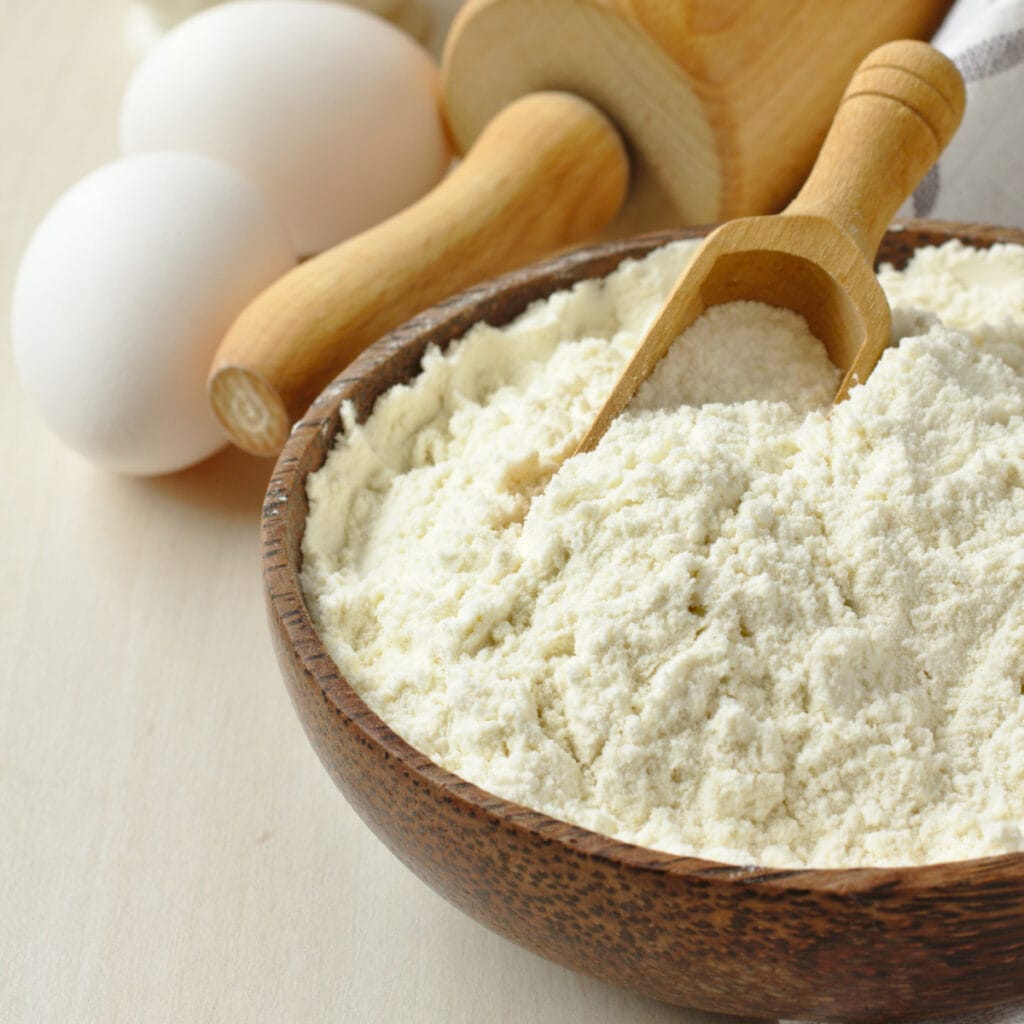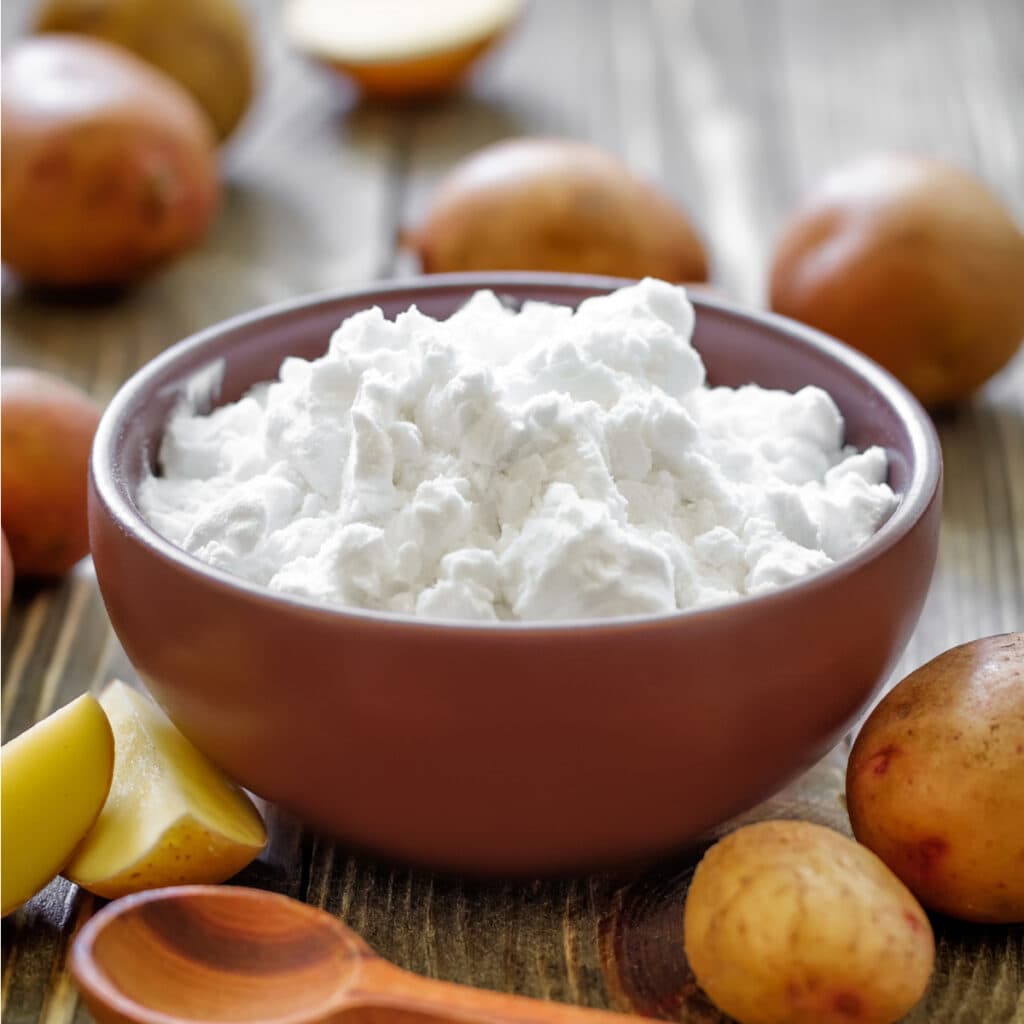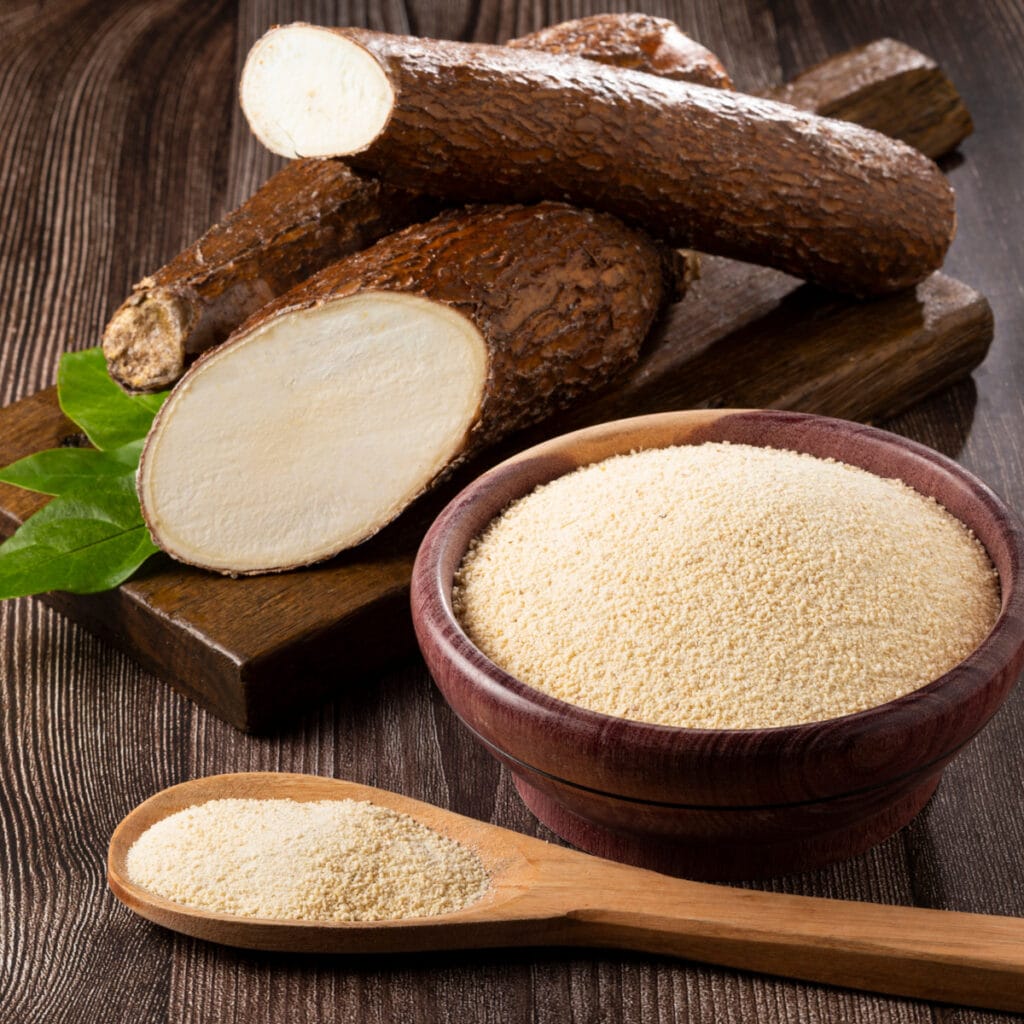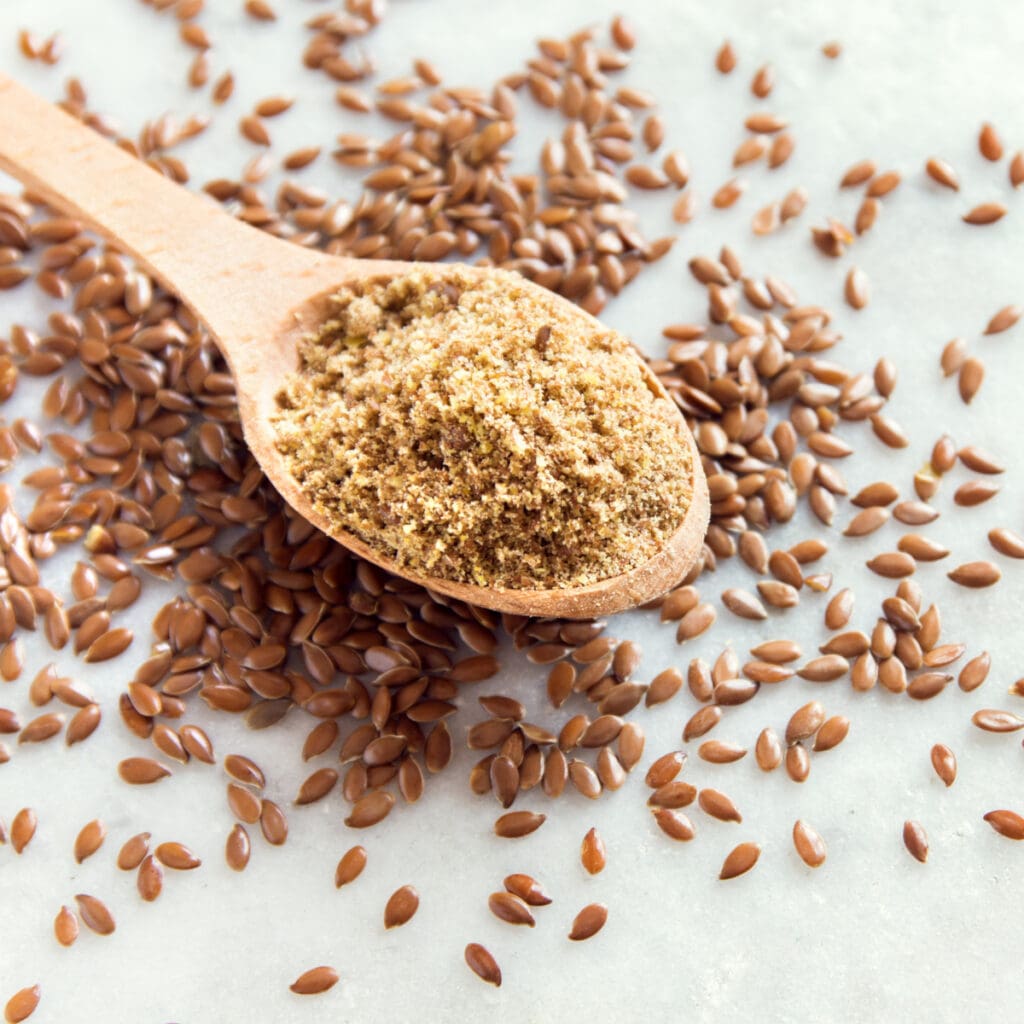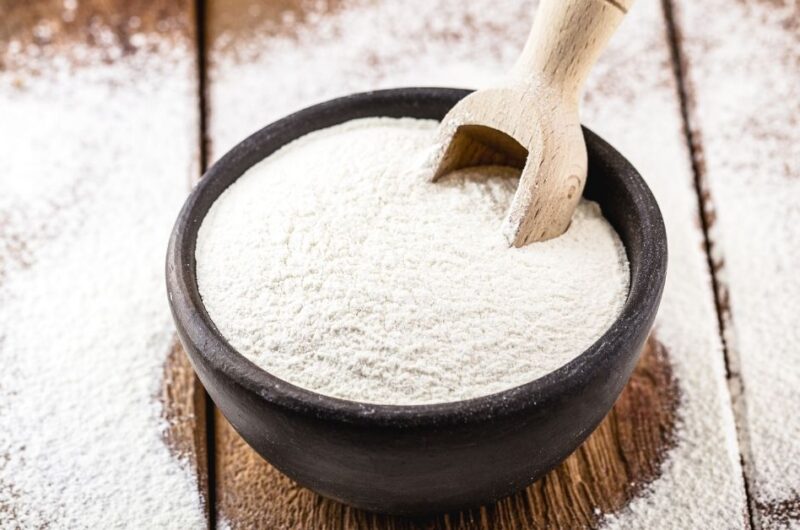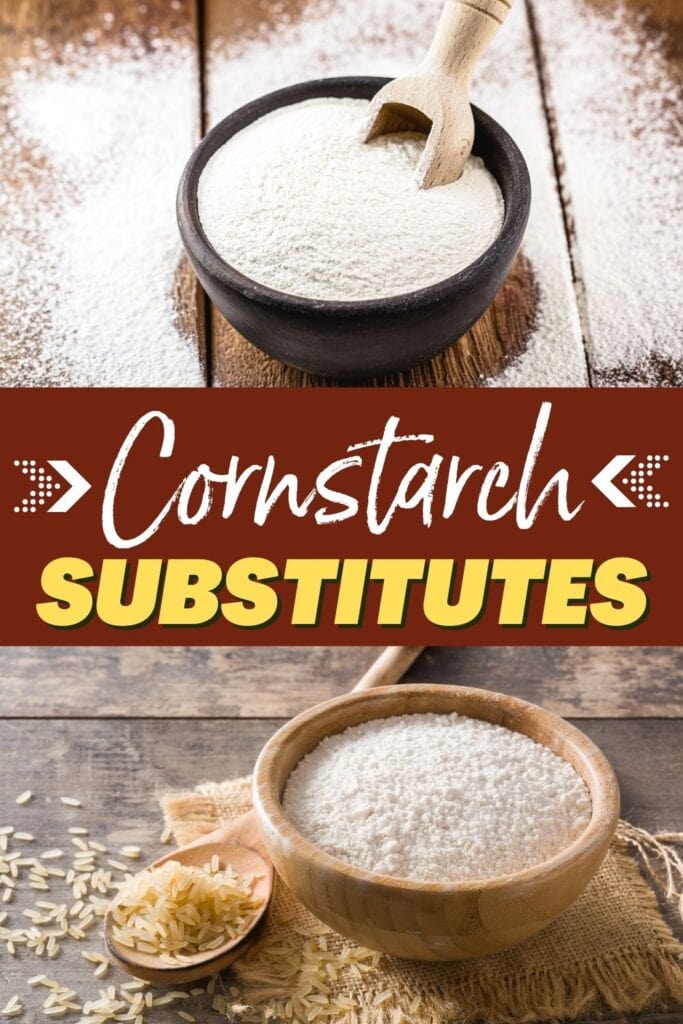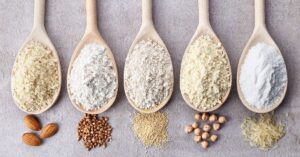After all, the last thing you want is to run out right in the middle of cooking. How are you going to thicken that sauce without it? The good news is that there are plenty of alternatives to cornstarch, and most are readily available. So, if you’re trying keto and need something low in carbs, or if you just forgot to get a new tub, this list has you covered. From potato starch to tapioca, these popular cornstarch substitutes are here to save the day.
What is Cornstarch?
Most of us have used cornstarch at least once or twice. And I’m sure that most of us have used it a lot more than that! But what exactly is it? Cornstarch is a powdery starch made from ground corn kernels. It’s naturally gluten-free but heavy in carbs and often used to thicken sauces and stews. It’s also used in baking to make cakes and cookies tender and to help puddings and custards set. Alternatives include arrowroot and tapioca. Thomas Kingsford gets the credit for “discovering” cornstarch. However, the truth is that even the Egyptians were using it long before Kingsford stumbled across it. Still, Kingsford made it famous, so you still see his brand – Argo – on cornstarch containers today.
What is Cornstarch Used For?
Today, many people avoid cornstarch because it’s high in carbs and calories. But, unfortunately, it’s also a handy ingredient and not always simple to avoid. Cornstarch is used primarily as a thickening agent. When heated, you can use it to make sauces, creams, and other liquid/semi-liquid foods thicker. This includes soups, puddings, and fruit curds. It’s also helpful in ensuring fried foods are extra crispy and desserts are super tender. People use cornstarch to thicken all kinds of things, including:
SaucesPuddingsSoupsGraviesPie fillings
Best Cornstarch Substitutes
The following ten ingredients are my picks for the best cornstarch substitutes. Some can be used in a 1-1 ratio, while others need measuring differently. Keep that in mind when choosing a cornstarch alternative.
1. All-Purpose Flour
Do you want to thicken a sauce or bread some chicken? If so, all-purpose flour is all you’ll need. In fact, it’s probably most people’s go-to when they don’t have cornstarch. It’s one of the most straightforward substitutions to make. I like it because you won’t notice any difference in the final product. There is a two-to-one ratio for substituting, though. So that’s two cups of all-purpose for every one cup of cornstarch. The reason is that all-purpose flour isn’t quite as thick as cornstarch. But when using it in a sauce, add it a little at a time to keep it from going overboard.
2. Wheat Flour
You get cornstarch, also known as cornflour, by grinding corn into powder. Wheat flour comes from the same process; only it uses wheat. It’s another carb-heavy ingredient, but it also contains fiber and protein. (Cornstarch doesn’t have much of either.) Unlike cornstarch, though, it’s not gluten-free. You’ll also need to mix the flour with water to make a paste before using it. And the ratio isn’t as clear-cut as the ratio for all-purpose flour. So, you’ll need to play around with it to get good results. In terms of taste and texture, there are a few noticeable differences. For example, some people claim that wheat flour gives dishes an “earthier” finish. I don’t notice it myself.
3. Psyllium Husk
Psyllium husk isn’t as well-known as wheat or all-purpose flour. However, it’s an excellent substitute for cornstarch if you need a low-carb thickening agent. I don’t recommend it for fried foods, though. Some people use it for fried keto dishes, but I’m not a fan. Still, it’s excellent for soups, creams, puddings, and more. It doesn’t have a taste and won’t change a dish’s texture from how it would be with cornstarch. It also has far fewer carbs than cornstarch. Also, it’s high in fiber, which is another point in its favor. Just be sure to add it sparingly. There’s no cut-and-dry ratio for swapping the two out. Just remember that you’ll need a lot less psyllium husk than you would cornstarch.
4. Xanthan Gum
This vegetable-based substitute is another fantastic choice for thickening dishes. And it’s terrific in baked goods! Like psyllium husk, though, it’s not optimal for use in fried foods. Also, like psyllium husk, a little bit goes a long way. So add it a tiny bit at a time, very slowly. Otherwise, you might end up with a funky, somewhat slimy texture that you won’t like.
5. Arrowroot Powder
Substituting arrowroot powder for cornstarch happens at a one-to-one ratio. That’s as simple math as you can get. So, whatever the recipe calls for, that’s what you’ll use. It also gives your soups and sauces the same lovely shine that cornstarch provides. And you won’t notice any difference in taste or texture either. I know what you’re thinking: if everything is the same, why not just use arrowroot powder all the time? Well, technically, you could. However, it doesn’t hold up as well if you need to reheat something. Therefore, you might want to avoid using it if you anticipate having leftovers.
6. Rice Flour
Rice flour has the same two-to-one ratio as all-purpose flour. So, for every tablespoon of cornstarch a recipe needs, you’ll use two tablespoons of rice flour. I find that rice flour works especially well in smaller baked goods. For example, it’s an excellent choice for cookies. However, it doesn’t work as well for me as a thickening agent. Some people claim it works wonders in puddings and sauces. Perhaps I’m just using it wrong. Even so, I prefer to stick to baked goods when using rice flour.
7. Potato Starch
If carbs aren’t a problem for you, but gluten is, you might want to try potato starch. It’s a flavorless starch, so it won’t change the overall taste of your dish. And as long as you use it correctly, the texture of your food should be the same. You’ll use a one-to-one ratio, but be sure not to add potato starch too soon. It can break down quickly and won’t work correctly if you do. Like arrowroot, it doesn’t reheat well, either. You know what happens to potato soup when you try to reheat it? That’s kind of the same thing that happens here. So, use potato starch for small meals when there aren’t likely to be leftovers.
8. Cassava or Tapioca Flour
Most people call this ingredient tapioca. However, it’s made by grinding cassava roots. (Then extracting and drying their starchy liquid.) Therefore, you can call it by either of its names. It’s another gluten-free alternative for cornstarch that you’ll add at a two-to-one ratio. I prefer to use it in baked goods, though you can also use it to thicken sauces too. Like most options on the list, it’s flavorless. So you don’t have to worry about your recipes tasting like tapioca pudding. Just be sure you don’t boil it, as doing so can really mess with the texture.
9. Glucomannan
If you’re on a low-calorie or low-carb diet, you need to check out glucomannan. It’s a plant-based soluble fiber with zero calories and carbs. Additionally, it’s a probiotic, so it’s good for your gut. Some studies show that it may help lower bad cholesterol, as well. It works best as a thickening agent, though you can use it for baking, too. Unfortunately, it’s more gel-like than powder, so you can’t use it as breading. (In other words, fried foods are out.) It thickens fast and effectively, so use much less than you would if using cornstarch. Most people suggest using only a quarter teaspoon for every teaspoon of cornstarch.
10. Ground Flaxseeds
Ground flaxseeds are often used as an egg substitute as they’re very absorbent and form a jelly when you add water. Because of this texture, it’s great for binding ingredients, like in cookie dough. As for using it in place of cornstarch, it also works well as a thickener. However, you’ll need to add it a little at a time. You’ll need about 1 tablespoon of ground flaxseeds with 4 tablespoons of water for every 2 tablespoons of cornstarch. Unfortunately, ground flaxseeds can have a gritty texture, which you may notice in the final product. But it does offer a boost of fiber that you don’t get from cornstarch. Click on a star to rate it!
Average rating 5 / 5. Vote count: 2 No votes so far! Be the first to rate this post.
Share on social media: Let us improve this post!



